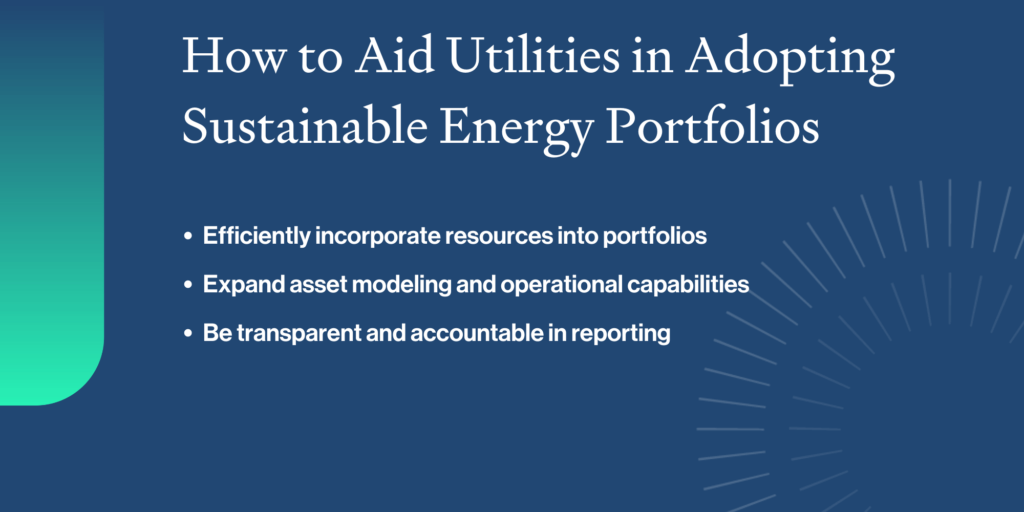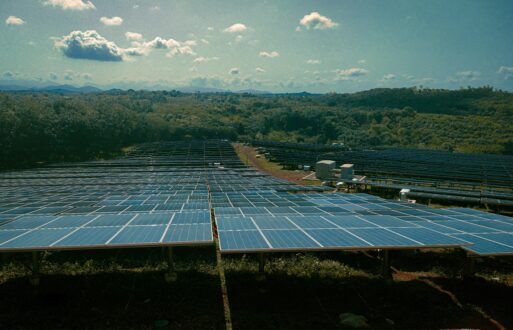This blog post is the first in an eight-part series on navigating the transition to sustainable energy based on company-wide emails crafted by Fred Lee, PCI founder and CEO, and Bryan Kelly, VP of Product Management. This series will help you understand the integration of renewable resources into the electricity grid and equip you with insights and strategies to navigate the changing energy landscape successfully.
The energy transition is reshaping the energy industry landscape, and its impact reaches far and wide. As we strive for a more sustainable future, it’s essential to understand the key aspects of managing sustainable energy portfolios.
In this blog post, we explore the challenges, opportunities, and strategies associated with the energy transition. We’ll delve into the key aspects of managing sustainable energy portfolios and explore how our innovative software platform assists energy portfolio, directors, and executives throughout this transition.
What is the energy transition?
The energy transition refers to a significant transformation in the energy industry. It’s driven by the goal of transitioning from greenhouse gas (GHG) producing resources to net-zero pollutant resources. This movement has evolved from being considered a crackpot desire to becoming an area of extensive academic research and demand from the public.
The energy industry must shift away from portfolios heavily reliant on fossil fuels to achieve a sustainable energy ecosystem. Instead, the focus is on developing a changing portfolio that primarily relies on renewable resources supported by energy storage solutions. While renewable energy sources will play a central role, fossil and nuclear resources will still have importance in providing reliable services, ensuring a balanced approach toward achieving a net-zero ecological economy.
Energy utilities' industry challenges
The energy portfolio includes both supply and demand resources. The energy transition considers not only supply-side resources but also demand-side resources. Historically, the demand for electricity was considered inelastic; however, technological advances are creating new mechanisms to bend the demand curve.
Demand response (DR), distributed energy resources (DERs), and increased use of price-sensitive bidding instruments will increase the elasticity of electric demand through the energy transition.
Because of the changing portfolio mix, energy utilities that drive the energy transition face several challenges. Reliably delivering energy with an increasing intermittent resource portfolio is a key concern. Managing a more rapid evolution of the resource mix, operating a portfolio with a greater diversity of fuel sources and technologies, and increasing regulatory reporting of progress toward net-zero initiatives pose additional challenges.
Rising capital costs, transitioning workforces, and increasing demand for energy further complicate the landscape.

Role of innovation in portfolio management
Innovation will be necessary to aid utilities in adopting more sustainable energy portfolios. Efficiently incorporating resources into the portfolio is vital for optimized energy management. Expanded asset modeling and operational capabilities will enable utilities to make informed decisions and leverage the potential of diverse resources.
Reporting on energy, commercial, and environmental performance will ensure transparency and accountability. Managing commercial, operational, and financial risks becomes increasingly crucial as the energy landscape evolves.
Additionally, onboarding new employees with high-tech skills and digital life experiences will be essential for adapting to the changing energy industry. Supporting the evolution of existing business models and the creation of new models is necessary to align commercial structures with modern needs.
Characteristics of an energy software platform for energy transition
Innovation and technology go hand in hand in navigating the energy transition. Energy companies need software platforms that possess specific characteristics to empower utilities in managing sustainable energy portfolios.
Scalability is crucial as renewable plants typically have lower capacity than traditional fossil fuel plants, and data management needs to be more granular. Visualization tools are necessary to observe anomalies and enable proactive responses within a larger pool of resources. Accessibility to data is key, as new workforces are comfortable with data and expect easy access for work, study, and value creation.
Adaptable workflow capabilities are vital to accommodate the frequent addition of wind, solar, battery, or DER aggregations to the portfolio mix. Lastly, security is paramount in the 21st century, with interconnected systems requiring protection against cyber threats through constant monitoring and rapid response.
Introducing the PCI platform
PCI offers software solutions that provide the required characteristics to empower energy companies through the energy transition.
We offer scalability to manage a larger resource pool and handle data at a granular level. The platform includes visualization tools for monitoring anomalies and enabling proactive response. With easy data access, it caters to the expectations of new workforces.
The adaptable workflow capabilities of the PCI Platform align with the changing portfolio compositions. The platform extends portfolio models beyond fossil and renewable resources to include Energy Storage, Distributed Energy, and Demand Response resources in the portfolio.
The platform prioritizes cybersecurity, ensuring the protection of interconnected business applications within the system.
This comprehensive software solution facilitates power and financial system modeling to optimize and execute in the changing energy landscape.
Managing sustainable energy portfolios
Managing sustainable energy portfolios is a complex endeavor involving various renewable resource classes:
- Renewable resources play a crucial role in achieving a sustainable energy ecosystem. With their increasing penetration, wind and solar farms present challenges and opportunities in portfolio optimization.
- Battery and storage technologies are key research investments, enabling short-duration energy storage and emerging long-duration energy storage solutions
- Coupled energy resources, also known as hybrid resources, demonstrate cost reduction and increased market-facing flexibility
- Network hydropower projects with pumped-storage-hydroelectricity (PSH) components have powered humankind for millennia and continue to play a significant role in energy production
- Distributed Energy Resources and Demand Response are emerging as innovative technologies and programs add flexibility to the portfolio
Such a broad resource mix may complicate operational decisions. An advanced energy platform is needed to automate today’s processes further. AI/ML technologies will amplify automation capabilities by framing choices against strategic and operational preferences to simplify decision-making.
PCI GenTrader continues to expand its modeling capabilities to support co-optimization and decision-making.
Empowering your energy portfolio management with the PCI Platform
Managing sustainable energy portfolios becomes increasingly critical as the energy transition gains momentum. The PCI Platform emerges as a valuable tool for portfolio managers, offering comprehensive capabilities to optimize the use of diverse renewable resources.
To learn more about how the PCI Platform can empower your energy portfolio management, contact us and schedule a personalized demo with our team to take the first step toward a sustainable energy future.






